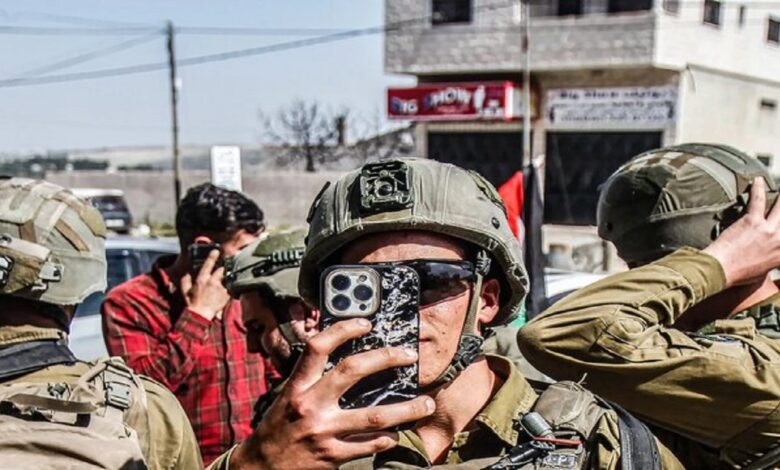How does Israel justify the war crimes in Gaza with the media war?

| Foreign Policy evaluated the information warfare of the Zionist regime to distort the narratives of the Palestinians and justify the killing and destruction it has unleashed in the Gaza Strip. |
By launching a propaganda campaign and information war, especially in the media and cyberspace, the Zionist regime tries to cover up its crimes against the Gaza Strip under the pretext of the alleged right “to defend the people.” itself” and sends the implied message that the October 7th operation “Al-Aqsa Storm” by the resistance fighters against the occupied lands “has given it a blank check to retaliate.”
Farin Palsi, in the continuation of this article, referred to the history of the Zionist regime’s information war during the regime’s military operation against Gaza, known as the “Molten Lead” operation, which caused the deaths of more than 1,000 people in Gaza in December 2008 and January 2009. And he stated that the history of the Zionist regime’s intelligence activities during that war showed that in the decade after that, it increased its emphasis and focus on mastering the flow of information during the war with the aim of “guaranteeing its mastery over the battlefield and starting to attract support for his war activities.”
This American publication wrote: “As war activities gained increasing public attention through social media, the Israeli government and its supporters worked over the next decade to shape the global narrative surrounding Israel’s military operations, especially during the escalation. Battles with fighters in Gaza will take shape.”
Farn Palsey points out that the efforts of the Zionist regime were not as successful as the campaigns of Palestinian supporters, who are sometimes less organized, in influencing global public opinion.
This American publication wrote that the events of last October 7th “became the cornerstone of an Israeli campaign in the field of social media. The narratives they published online attempted to compare Hamas to ISIS, to blur the lines between civilians and fighters, to claim that Palestinians reject coexistence, and to portray Israel’s campaign as a humanitarian conflict to extricate Palestinians from Free the hands of Hamas, introduce them. The emphasis on violence by Hamas caused Israel to present a one-dimensional story of a multi-dimensional war, in which there is no mention of the decades of occupation, the siege of the Gaza Strip, and systematic violence against the Palestinians.
After five months of this war, the Zionist regime has killed more than 30,000 Palestinians, injured more than 70,000 others and displaced about 1.9 million people from their homes. Airstrikes have damaged or destroyed nearly a third of the buildings in Gaza.
As the extraordinary scale of civilian killings and house destruction in Gaza was seen on social media and protesters filled the streets of countries in the region, Europe and the United States, the Israeli media strategy focused on diverting attention from these protests.
According to this American publication, with the intensification of protests against their crimes in Gaza, the Zionists are polarizing the space in Europe and the United States of America by fueling the alleged narrative that “criticizing their war is equivalent to anti-Semitism and protesting the killing.” “The wide spread of the Palestinians is equivalent to the implementation of Hamas’s orders,” they said
Foreign Policy writes: “Israel launched an estimated $7.1 million campaign in October to accuse Palestinian supporters of complicity with Hamas. Pro-Israel groups also supported the efforts of the Israeli government and spent more than 2 million dollars on social media advertising in America, which was about 100 times more than the expenses of pro-Palestinian groups in this field.
Farin Palisi stated that the members of the cabinet and parliament of the Zionist regime used literature that “dehumanized” the Palestinians and the people of Gaza more and more after October 7th, with the aim of blurring the dividing line between Hamas fighters and the civilian population of Gaza. fade; The literature that was highlighted in South Africa’s lawsuit against Israel in the International Court of Justice on charges of genocide.
This American publication wrote: “The reflection of this literature on social media includes the use of words such as erase, erase, or destroy Gaza, and these words were used about 18,000 times in posts in Hebrew on X social media in the first month of the war. They were repeated, but before this war they were repeated 16 times per month on average”.
This media writes that although the Israeli government’s cabinet insists that the use of such literature is not its official policy, it seems that “Israel has encouraged it as part of its strategy in the field of social media”.
In October, an IDF psychological warfare unit established a secret Telegram channel to target Israelis and released thousands of images of soldiers targeting Palestinian forces, as well as the destruction of Gaza. As the war progressed, more and more Israeli soldiers published videos from Gaza in which they boasted about killing Palestinians, danced or desecrated Palestinian graves.
Farin Palsi wrote that the Zionist regime continued its social media campaigns and tried to revive criticism of the significant losses it inflicted on the people of the Gaza Strip. Also, this regime falsely accused journalists and employees of relief organizations of collaborating with Hamas.
A group supporting the Zionist regime called “Honest Reporting” accused Palestinian photographers working with major international news media of collaborating with Hamas during the October 7th attacks and even carrying weapons, but it retracted its claim shortly after. However, the cabinet of this regime has not yet deleted the posts it published based on the claims of this group in its social media account and did not even mention the said group as a source in them.
According to this report, the Zionist regime fully understands that the confused audience will be drawn towards selected facts that will strengthen their intended points about the war.
Also, the Zionist regime controls the flow of information by limiting the access of international media to Gaza, targeting communication infrastructure in Gaza, implementing frequent power outages, creating fuel shortages with the aim of preventing the supply of electricity needed to charge phones and servers and impose Long-term outages have controlled the Internet.
According to Farin Palsi, although this regime cannot completely cut off the Palestinians’ access to the Internet, it has limited the amount of reliable information that can be released from the field in Gaza. This is despite the fact that 70 Palestinian journalists were martyred in Israeli airstrikes in the first 2 months of the war, and since then this figure has increased to 90.
Source: ISNA
| © | Webangah News Hub has translated this news from the source of Young Journalists Club |


